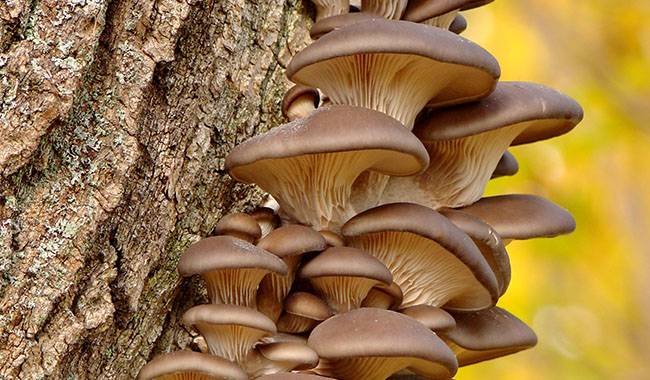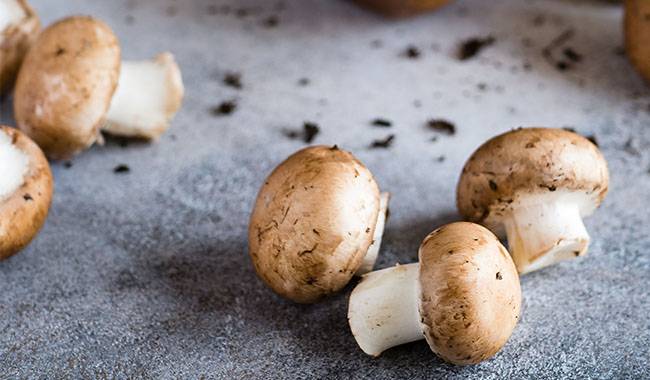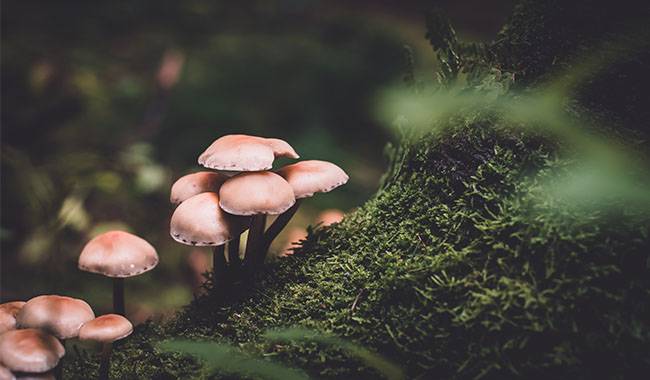
The spring fieldwork season is in full swing. Trees, shrubs, beds, flower beds – everything needs care and attention, and most importantly – hands!” . Where can I get that much? Well, the good news is that Shiva has two pairs, then four, six, even eight pairs, as needed. We’re willing to do that – and then there’s the information on the internet that American experts have finally confirmed, after a long study, that using mushrooms reduces the risk of cancer by nearly half (the Chinese and Japanese have been using them for a long time) and that Singaporeans have found them to be good for the brain. How can you not go for a run in the woods? See what you can find on the menu to spice up your menu at the beginning of the season? This ThumbGarden article covers a variety of edible mushrooms (less known to mushroom pickers than True morels) and Oyster Mushroom, which are mostly found on supermarket shelves.
Disciotis
True morels, Gyromitra and Morchellaceae are fairly easy to identify and familiar, although Gyromitra is considered edible, but is traditionally consumed in Europe.
Then there are the mushrooms, sometimes referred to as “True morels”. While I find it hard to imagine True morels with ears. it is clear that some people do. A more common name for this mushroom is the Discus, or scientifically speaking, Disciotis. the name “Discus” fits this mushroom quite well, except that the Discus tends to look a bit wrinkly.
Disciotis is not related to True morels in any way, but it is related to the species, as they belong to the same family, Diptera. Apparently, Discina ancilis is a crumpled version of Disciotis. Only Gyromitra is ruffled downward at the margin, while dyscina is ruffled upward at the margin.
Discina Perlata
The most common mushroom in the forest is the Discina perlata. the cap and stalk of this mushroom can be identified fairly routinely, but the mushroom picker does not need to do so, as the whole mushroom can be picked. The young mushroom first resembles a bud and then develops into a brownish, somewhat wrinkled Disciotis. When older, it takes on a flattened shape with uneven surfaces and edges. Generally, if the stigma can be stretched beyond the edges to give it a flatter shape – you get a paramecium. The smell of the mushroom is not particularly noticeable, but it is mushroom-flavored and has a structure similar to a suture. Its size is not small: 6 inches (15 cm) in diameter.
Discina perlata grows in much the same way as conifers, tending to be coniferous. In our oak-hornbeam forest, there is not a single needle within 5 miles of the surrounding area, but they are also growing. In time, from about the established temperature of 41 °F (5°C), to the end of May-June, depending on the area. They can be found on decaying wood, such as stumps, dead wood, and submerged branches.
There are several similar species that grow in different places, including coniferous and deciduous forests, both on wood and on soil. To the layman, the outward appearance of some is problematic and, in general, unnecessary. A notable difference is the less common veiny dysentery, which is much larger and smells of chlorine. The smell disappears when boiled.
How to Cook It and Which Mushrooms I Can Avoid Confusion With?
The mushroom is often positioned as conditionally edible, and for no particular reason, apparently just because it is related to the ambiguous string. Cooking it is much easier than True morels (Gyromitra and Morchellaceae) because there is no need to wash the garbage out of all the folds and evict the inhabitants. And the flesh is much thicker.
Conditional consumption (and this is just in case) requires boiling in plenty of water for 10 minutes and draining the broth, which has subsequently been fried, stewed in sour cream, made mushroom caviar and other delicacies. However, it is not necessary to do this if the dysentery is really collected and not flattened strings. Chrysanthemum can be fried directly or made into a soup without boiling it first.
Its medicinal properties remain unclear – either not found or not fully investigated.
The only suspicious fungus that can be confused with Disciotis is suture, which is very rare if the suture is unusually dispersed or if Disciotis is excessively wrinkled. But this is only when viewed from the top. The bottom and incision will show – who is who. The suture has a serpentine pedicle and an equally serpentine cap. Disciotis, on the other hand, looks like a funnel without a hole, and its edges are either relatively smooth, wrinkled, or unfolded in the shape of a Disciotis.

Oyster Mushroom
Anyone who goes to the supermarket must have seen Pleurotus ostreatus. lovely flaky mushrooms with gray, whitish, brownish caps. Some lucky people have seen the lemon and pink ones. In the woods, they look slightly different (if not completely different).
A. Pleurotus pulmonarius
We should probably start with Pleurotus pulmonarius, or spring Pleurotus ostreatus. A very tricky mushroom with a different shape, apparently for camouflage purposes. Probably very similar to Oyster Mushroom: this nice big cluster of mushrooms with the stalk on the side, only lighter in color. Almost store-bought, but lighter and shinier. Spring Oyster Mushroom with a stem in the center is not uncommon – this variant is easier to grow on the decaying trunk of a fallen tree. The “tongue” form of Pleurotus ostreatus is sometimes found on stumps and erect decaying trunks. mixtures of all these forms are also found.
The overall color of this Pleurotus ostreatus is white-gray, with cream and tawny tones appearing over time. The flavor is light and pleasant. Usually occurs on deciduous wood from April to May, depending on the region. Declines in early summer. Tastes no worse than Oyster Mushroom skin (the store’s Oyster Mushroom is gray), but slightly watery. This is a comparison with wild mushrooms in terms of taste and is not at all comparable to store-bought mushrooms. Picking is a pleasure: one large bush is enough for a family dinner.
B. King trumpet mushroom
Lucky residents of grasslands and forested prairie areas can look for the very tasty King trumpet mushroom, or Prairie Oyster Mushroom, in the spring. this mushroom does not like wood, but rather the decaying roots and even stems of umbrella plants (rightly so: where can you get wood in a prairie?) This immortal fungus has a head spanning up to 12 inches (30 cm) and may look like a boulder lying on the ground in a solitary state. The color of the cap may resemble that of the most noble white mushroom, sometimes referred to as the steppe white mushroom. It can also be cultivated artificially and is known commercially as “eringi”.
Artificially grown mushrooms do not resemble the steppe mushroom in appearance, flavor, or health benefits. Like most King trumpet mushrooms, the stalk is off-center, dense, and becomes “hairy” over time. The cap is colored white, gray, yellowish and brown. The discs are wide and darken in color over time. The flesh is dense and white, with a faint mushroom odor and pleasant flavor.
It is considered the most delicious Oyster Mushroom, has a high protein content, is very digestible and is generally close to the porcini in terms of its health benefits.
C. Pleurotus citrinopileatus
In the United States, in its southern region, the beautiful Pleurotus citrinopileatus, also known as “Golden Oyster” because of its tendency to grow on elm trees. This mushroom, like the sarsaparilla, is highly decorative. It is incredibly photogenic. This sunny color always attracts attention in the forest in spring. It is very pleasant because it makes the life of the mushroom picker easier. This fungus is very conspicuous, also like the Sulfur Mushroom, it also never hides but shows its bubbling yellow glory to all passersby.
Generally, Pleurotus citrinopileatus has an Oyster Mushroom-like appearance with an eccentric stalk and a funnel-shaped cap when adult, and grows mainly in large colonies. Younger mushrooms have the most “lemon” coloration, as they fade over time. Older mushrooms are not only less pleasing to the eye, but their stalks become fibrous and coarse, making them unpleasant to eat. Otherwise, Oyster Mushroom is delicious and suitable for all types of cooking.
D. Other Oyster Mushroom
Other species of Oyster Mushroom can be found in the spring forests, such as the flared flat mushroom, which is very common, especially in southern regions. It has a more pronounced stalk and a deeper funnel than the Oyster Mushroom, but overall is very similar to it.
Oyster Mushroom is more northern-oriented, while Oyster Mushroom doesn’t really resemble the Apricot Mushroom in general appearance (semi-circular cap with covered plates hanging from the trunk), but also in terms of its individual growth.
How to Make It Mushroom?

It is impossible to confuse Oyster Mushroom with poisonous mushrooms, so it is safe to pick them. In addition, grassland Oyster Mushroom does not accumulate toxic substances in the tissues, on the contrary, their consumption helps to expel them from the body. By the way, this mushroom is considered to be a natural energy drink.
Oyster Mushroom can be prepared in many different ways – it can be fried, stewed (mushrooms in sour cream with onions is a classic and very suitable for apricot mushrooms!) ), made into soups, dried, made into mushroom seeds, roasted and marinated.
Consumption of Oyster Mushroom reduces the risk of cancer and has an anti-inflammatory effect on arthritis. Prevents the development of cataracts and has beneficial effects on neurodegenerative diseases. It inhibits the development of atherosclerosis and protects the liver. And, like many wild and uncultivated foods, it is a good immunostimulant.



